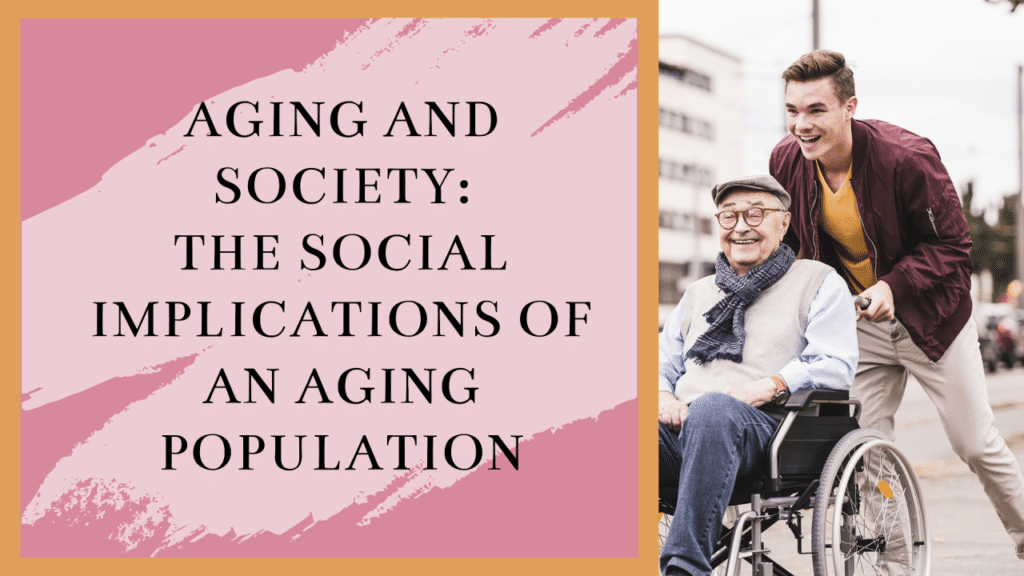Aging is a natural part of life, but its impact on society is profound and far-reaching. As the global population continues to age, we face a multitude of social, economic, and political challenges. This article delves into the social implications of an aging population, exploring the ways in which our societies are adapting and the innovative solutions being proposed to meet the needs of older adults.
The Demographic Shift
The world is experiencing an unprecedented demographic shift. According to the World Health Organization (WHO), by 2050, the number of people aged 60 and over is expected to double, reaching 2.1 billion. This shift is particularly pronounced in countries like Japan, Italy, and Germany, where the proportion of older adults is already significantly high. In contrast, many developing countries are also seeing rapid increases in their elderly populations, creating a global challenge that demands attention.
Economic Implications
One of the most significant impacts of an aging population is on the economy. Older adults often leave the workforce, leading to a decrease in the labor supply. This can slow economic growth and increase the burden on social security systems. For instance, in the United States, the Social Security Administration projects that by 2035, there will be only 2.1 workers for every Social Security beneficiary, down from 3.7 in 1970. This imbalance creates financial strain on the system, raising concerns about its long-term sustainability.
Moreover, healthcare costs tend to rise with age. Chronic conditions such as heart disease, diabetes, and arthritis are more prevalent among older adults, leading to higher medical expenses. The Centers for Medicare & Medicaid Services (CMS) reports that healthcare spending for individuals aged 65 and over is approximately three times higher than for working-age adults. This increased demand for healthcare services puts additional pressure on public health systems and requires innovative solutions to ensure that care remains accessible and affordable.
Social Implications
Beyond the economic impact, an aging population also has profound social implications. One major concern is the potential for increased social isolation and loneliness among older adults. As people age, they may experience the loss of spouses, friends, and social networks, leading to feelings of isolation. Research from the National Institute on Aging indicates that social isolation is linked to higher risks of various health issues, including cognitive decline, depression, and cardiovascular disease.
To combat this, communities around the world are implementing programs aimed at fostering social connections among older adults. For example, in the United Kingdom, the Campaign to End Loneliness works to raise awareness and promote initiatives that help reduce loneliness. Similarly, in Japan, where a significant portion of the population is elderly, community centers and local governments offer activities and support groups to help older adults stay connected and engaged.
Intergenerational Relationships
The aging population also has the potential to reshape intergenerational relationships. Traditionally, many cultures have valued and respected their elders, with multigenerational households being the norm. However, modern lifestyles and urbanization have led to a decline in this practice, particularly in Western societies.
Reinvigorating intergenerational connections can benefit both young and old. Programs like “Grandparents Raising Grandchildren” in the United States and “Adopt a Grandparent” in various countries encourage younger generations to interact with and learn from older adults. These initiatives help bridge the generational gap, fostering mutual understanding and respect while combating age-related stereotypes.
Workforce Adaptations
As life expectancy increases, many older adults are choosing to remain in the workforce longer. This trend presents both challenges and opportunities for employers and employees alike. On one hand, older workers bring valuable experience and knowledge to the table. On the other, they may face age-related discrimination or struggle with adapting to new technologies.
To address these issues, companies are adopting more age-inclusive policies. Flexible working arrangements, such as part-time roles or remote work, can accommodate the needs of older employees. Training programs focused on digital literacy and skills development help older workers stay competitive in the job market. By creating an inclusive workplace environment, businesses can harness the potential of a diverse workforce and promote a culture of lifelong learning.
Housing and Living Arrangements
Housing is another critical area impacted by an aging population. Older adults often require different living arrangements than younger individuals. The demand for age-friendly housing, such as assisted living facilities and senior communities, is on the rise. These environments are designed to support the needs of older adults, offering amenities and services that promote independence and quality of life.
In addition to specialized housing, there is a growing trend towards “aging in place,” where older adults remain in their own homes for as long as possible. This approach requires modifications to make homes safer and more accessible. Simple changes, such as installing grab bars in bathrooms or creating single-level living spaces, can make a significant difference. Additionally, community-based services, such as meal delivery and in-home care, support older adults in maintaining their independence.
Technological Innovations
Technology plays a crucial role in addressing the challenges of an aging population. Innovations in healthcare, communication, and daily living are transforming the way older adults live and interact with the world. Telemedicine, for instance, allows older adults to consult with healthcare providers from the comfort of their homes, reducing the need for travel and making healthcare more accessible.
Wearable devices, such as smartwatches and fitness trackers, help monitor vital signs and detect potential health issues early. These devices can alert caregivers or medical professionals in case of emergencies, providing peace of mind for both older adults and their families. Additionally, smart home technologies, like voice-activated assistants and automated lighting, enhance safety and convenience for older adults living independently.
Policy and Advocacy
Addressing the social implications of an aging population requires comprehensive policies and advocacy efforts. Governments and organizations must work together to create supportive environments for older adults. This includes developing age-friendly infrastructure, ensuring access to healthcare and social services, and promoting policies that combat ageism and discrimination.
International organizations, such as the United Nations and the World Health Organization, play a pivotal role in advocating for the rights and well-being of older adults. Initiatives like the WHO’s “Global Age-Friendly Cities and Communities” encourage cities worldwide to become more inclusive and supportive of their aging populations. By sharing best practices and fostering collaboration, these efforts help create a global framework for addressing the needs of older adults.
Conclusion
The aging population presents both challenges and opportunities for societies around the world. By understanding and addressing the social implications of this demographic shift, we can create supportive environments that promote the well-being and dignity of older adults. Through innovative solutions, intergenerational connections, and inclusive policies, we can ensure that our societies are equipped to meet the needs of an aging population. As we navigate this journey, it is essential to recognize the valuable contributions that older adults make to our communities and to embrace the potential for a brighter, more inclusive future.







